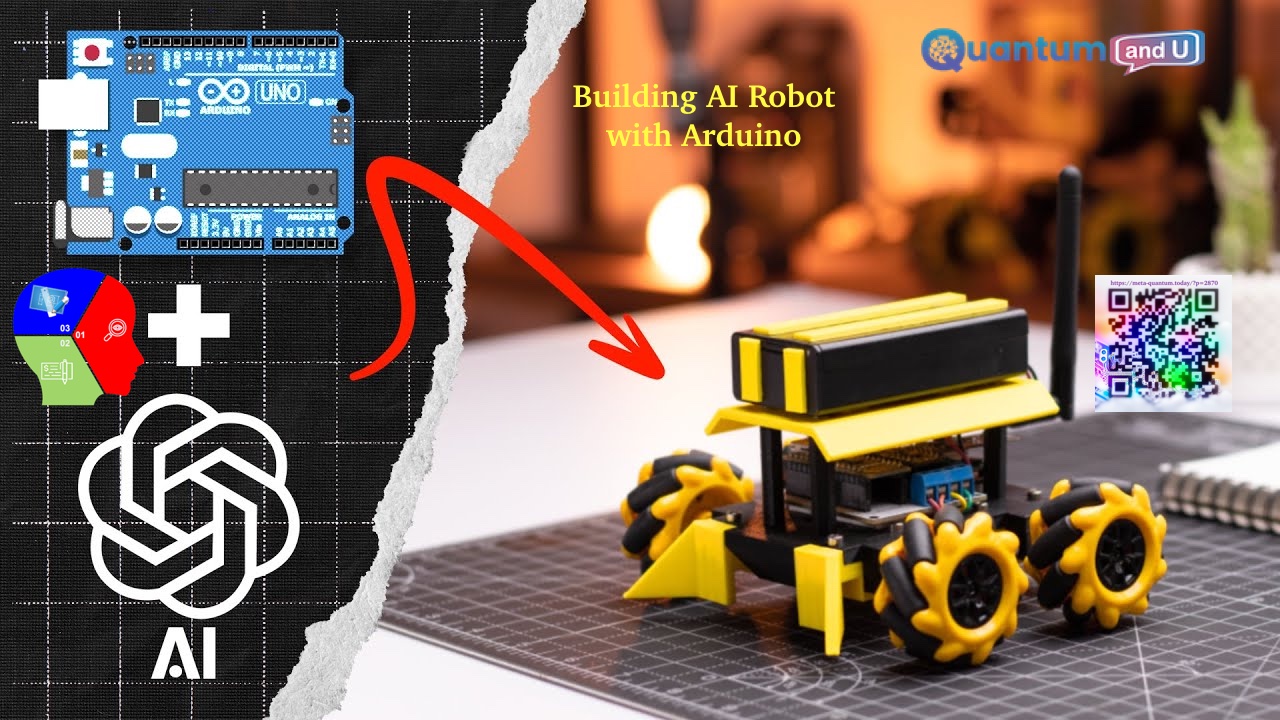
Introduction:
AI has become a popular topic recently, and I’m no exception. In this guide, we’ll explore the exciting integration of AI and Arduino to create a unique project: a hand gesture-controlled robot. Stay with us till the end; it’s going to be worth it!
We shared the fascination with AI and how we plan to combine it with Arduino to create this special robot.
Unable to find a suitable chassis design online, the decision was made to create a custom one using Fusion 360. After completing the design, it was 3D printed.
Next, we’ll cover the assembly of the robot. First, purchase N20 micrometal gear motors, wheels, and other necessary components. Then design a circuit using EasyEDA and order PCBs from JLCPCB. Upon receiving the PCBs, solder all the required parts onto the boards.
Video about building the AI Robot:
Sections info of above video:
- Designing the Chassis:
- Unable to find the desired chassis online, decided to design it for a compact and aesthetically pleasing result.
- Using Fusion 360, transformed a 2D drawing into a 3D model.
- Assembling the Robot:
- After 10 hours of printing, the 3D parts were ready.
- Motor mounting, using N20 micrometal gear motors and Mecham Wheels for versatility in movement.
- Creating space for electronics with 3D printed standoffs.
- Circuit Design and Assembly:
- Designing the circuit using EASYEDA and ordering PCBs from JLCPCB.
- Mounting components including Arduino Nano, motor driver, buck converter, and NRF24L01 radio module.
- Using a smaller Seeeduino-XIAO for the transmitter circuit for compactness.
- Completion of both circuits with header pins and screw terminals.
- Programming the Robot:
- Utilizing ChatGPT for generating foundational code structures for both transmitter and receiver circuits.
- Customizing the code to enable communication and gesture recognition.
- Uploading and testing the codes to ensure flawless hand gesture control.
How this will impact to SEA and opportunities:
The rise of AI-powered Arduino projects, like the AI robot you described, is likely to have a mixed impact on Southeast Asia, bringing both opportunities and challenges. Here’s a breakdown of how it might influence the region:
Opportunities:
- Educational Tool: Affordable AI-enabled Arduino projects can serve as educational tools in Southeast Asia. Students can learn about programming, electronics, and AI principles through hands-on experiences. This could cultivate a future generation of tech innovators in the region.
- Growth of Tech Industry: The popularity of AI-Arduino projects could fuel the growth of the tech industry in Southeast Asia. More people might be encouraged to pursue careers in technology, leading to a larger talent pool for tech startups and companies.
- Entrepreneurial Ventures: These projects could spark new ideas for local businesses. Entrepreneurs in Southeast Asia might develop AI-powered solutions using Arduino for various applications, like agriculture or environmental monitoring.
Challenges:
- Digital Divide: The accessibility of these projects could be limited by the digital divide in Southeast Asia. People in remote areas or with lower incomes might not have access to the resources or internet connectivity required for these projects.
- Job Displacement: While AI creates new opportunities, it also has the potential to displace some jobs. Jobs that involve repetitive tasks might be automated using AI-powered machines.
Conclusion:
We’ve successfully set up our AI-enhanced Arduino robot, which flawlessly responds to hand gestures. We didn’t stop there; we added several exciting modes for increased functionality. From the normal mode to drift mode and corner drive mode, this robot offers versatility and fun. We hope you found this journey as enjoyable as we did.
The impact of AI-Arduino projects on Southeast Asia hinges on their development and implementation. If these projects are strategically used to bridge the digital divide and foster education and entrepreneurship, the positive impacts could outweigh the challenges.
Additional points:
- Government Policies: Southeast Asian governments can shape the impact of AI by promoting STEM education, creating a supportive environment for tech startups, and addressing potential job displacement issues.
- Focus on Local Needs: AI-powered Arduino projects developed in Southeast Asia should prioritize local needs and challenges. This approach could lead to more sustainable and impactful applications of the technology.
Key Takeaways:
- Innovative Design: Designing a custom chassis for a unique and compact robot.
- Precision Assembly: Using quality components and meticulous assembly for optimal performance.
- Circuitry Mastery: Designing, ordering, and assembling PCBs for seamless integration.
- AI Integration: Leveraging ChatGPT for generating foundational code structures, enhancing the robot’s capabilities.
- Functional Versatility: Implementing multiple modes for varied and engaging user experiences.
References:
- Fusion 360 for 3D modeling.
- EASYEDA for circuit design.
- JLCPCB for quality PCB manufacturing.
- Arduino Nano
- Mecanum Wheels
- Seeeduino-XIAO
Thank you for watching! Feel free to share your project ideas in the comments below; we always appreciate hearing from you.


